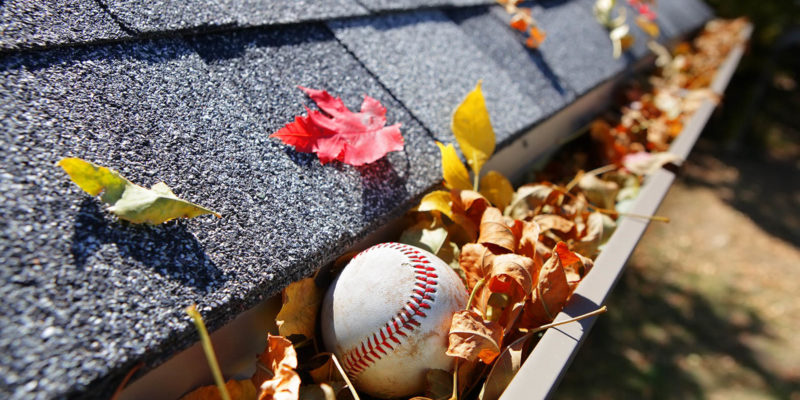By Todd El-Taher
Originally Published in The Beacon Fall 2018
Start with the roof: Sometimes a visual inspection is all that is necessary to avoid costly repairs. Look for missing shingles, chimney caps, bent or dislocated flashings swaying in the breeze. After the shingles are checked off let’s look at gutters. Periodic maintenance on gutters is a must. I live in the woods and have to clean my gutters five to six times a year as the trees on my property shed their leaves and blooms in waves. This year in order to reduce the maintenance of gutter cleaning I installed gutter guards but there is a trade off with those. Often times we give ourselves a pass from roof and gutter maintenance when installing gutter guards but the reality is that the gutter guard selected, needs to strike the happy medium of having holes big enough to allow water to pass through and solid enough so that hopefully the next breeze will blow the leaves off for us. In cases where the leaves accumulate on the top of the gutter we can actually inadvertently provoke an ice dam. In fact an ice dam is much more likely in cases where gutter guards are installed as they can serve as the structure necessary to hold up snow. If you’ve installed gutter guards on your property you still need to view the gutter line of your building to see if there is any accumulation of debris on the top of the gutter; this is especially important and common at valleys. Needless to say if you do not have gutter guards please make sure that your gutters are clear. (Top tip: Oak trees are some of the heartiest in our region and one of the last to lose their leaves. If you have mature oaks near your property, delay the gutter cleaning of your property until after the first hard freeze.)
Next is downspouts: Put on your best raincoat and walk your property in a downpour. That might be the single best piece of advice I can give you with regard to maintaining your property regardless of season. Watch the water coming off the roof. Is it cascading over the gutters? Do your downspouts leak at the seams? Does the water erupt like a fountain where the downspout meets the underground drain leader? All of these conditions point to an obstruction the only difference is where the obstruction is. When the landscaping crews come by in the spring they slap down a fresh layer of mulch which looks fantastic. Please ask them to be sparing when they place mulch near the downspouts as decomposing wood falling into drain leaders is a very difficult clog to remove. Have your downspouts jetted annually after cleaning your gutters to ensure that your system is complete working order.
Where does the water go? If your property drains water above ground watch it during the downpour. Does it drain away from the building and structures? Does it pond on the soil creating a swamp? Does it flow out onto pedestrian sidewalks? Knowing where your downspouts discharge your water during a downpour will help avoid slip claims from ice build-up from improperly graded or draining soil. If your property has a chronic issue with clogged drain leaders it will reveal itself as erosion of the soil in proximity to the building if given slope to do so. In cases where the water stays against the side of the building you’re inviting water infiltration which is far costlier.

